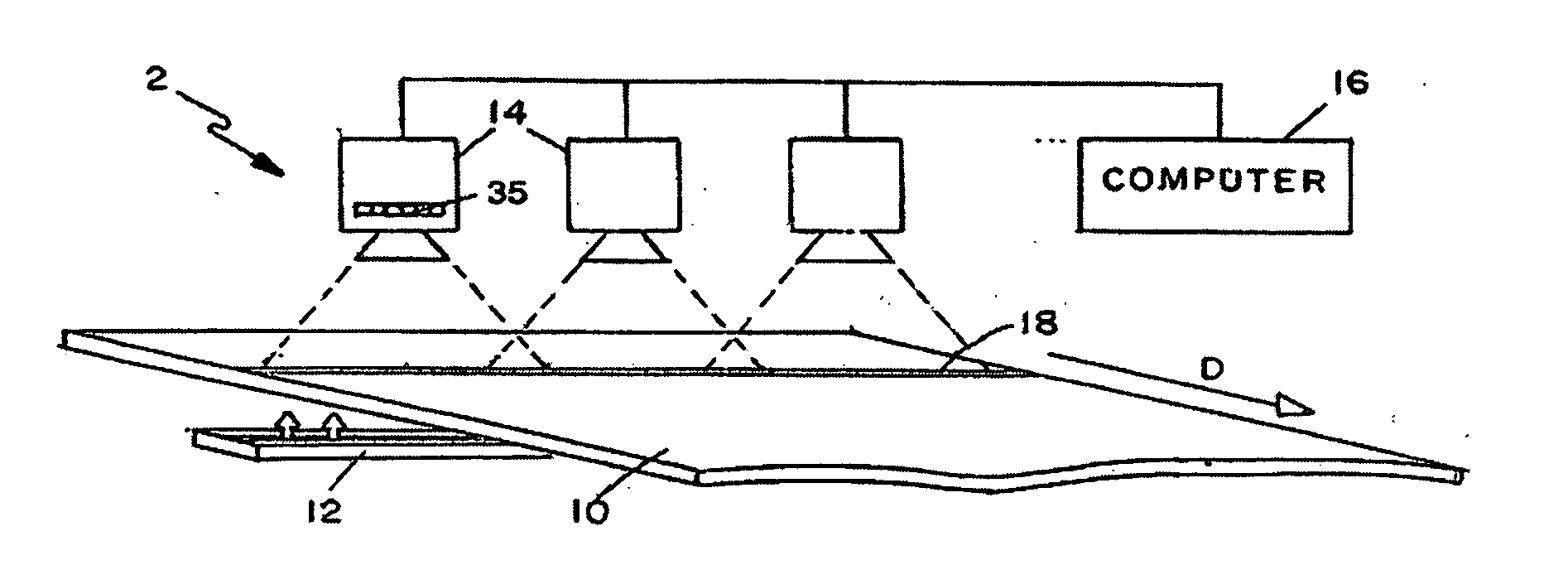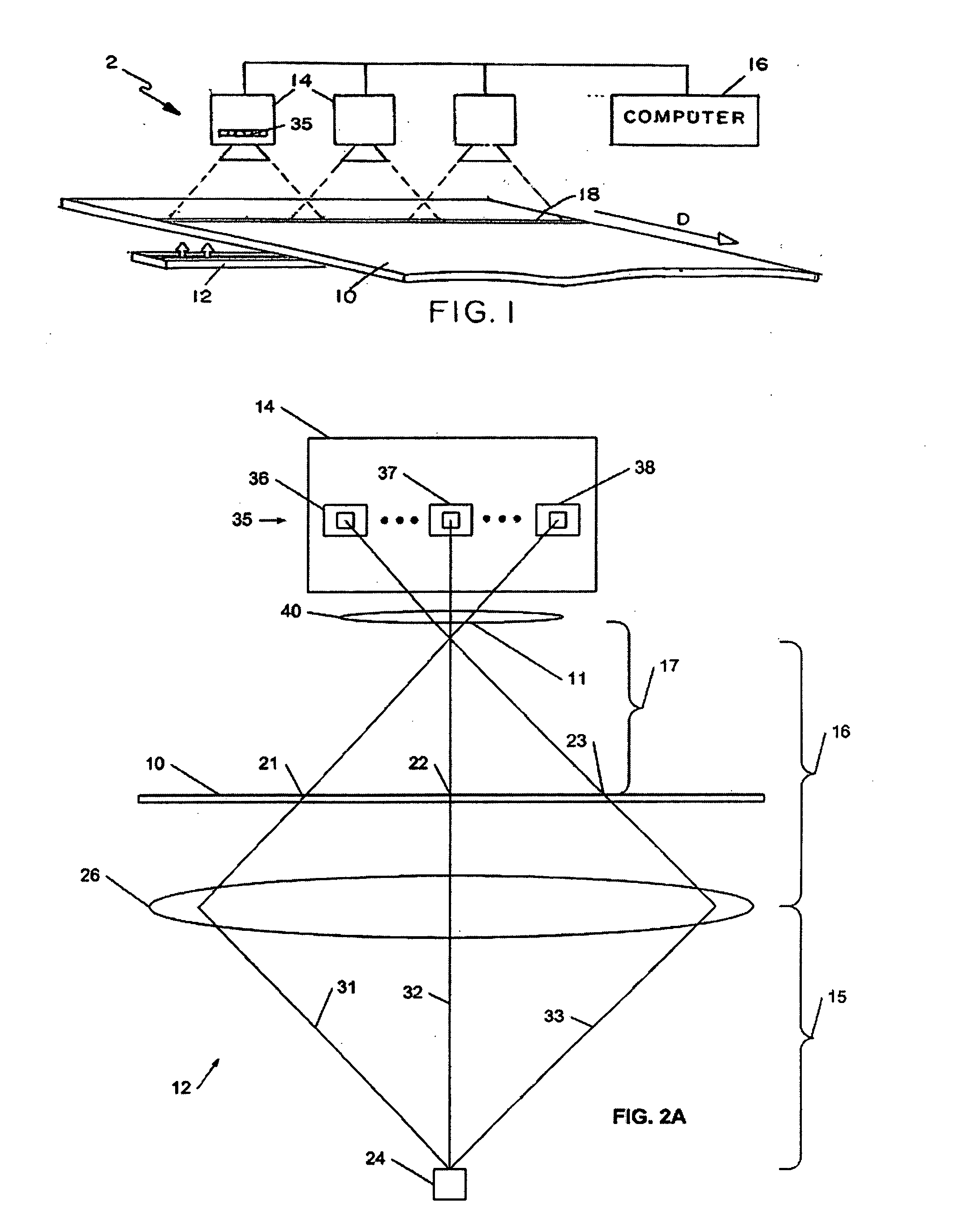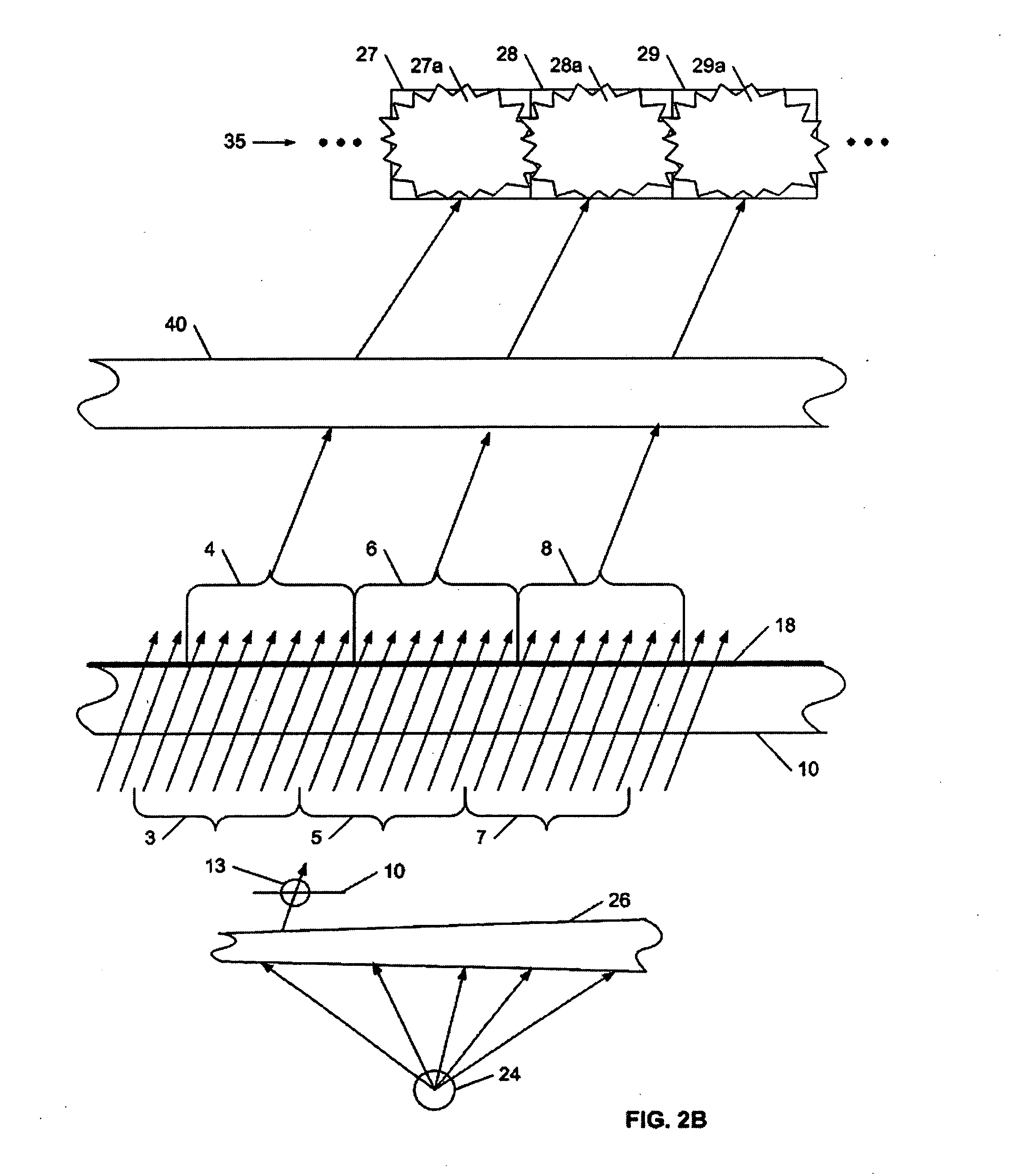Illumination system for material inspection
a material inspection and illumination system technology, applied in the field of illumination systems, can solve the problems of unsuitable products for sale, unusable web materials, and unusable products, and achieve the effects of reducing brightness, reducing brightness, and increasing ligh
- Summary
- Abstract
- Description
- Claims
- Application Information
AI Technical Summary
Benefits of technology
Problems solved by technology
Method used
Image
Examples
Embodiment Construction
[0040] Detailed descriptions of examples of the invention are provided herein. It is to be understood, however, that the present invention may be exemplified in various forms. Therefore, the specific details disclosed herein are not to be interpreted as limiting, but rather as a representative basis for teaching one skilled in the art how to employ the present invention in virtually any detailed system, structure, or manner.
[0041]FIG. 1 illustrates a web inspection system 2 including a web material 10 moving in a machine direction D, and an illumination system 12 according to an exemplary embodiment of the invention for illuminating the web 10. Each fixed line scan camera 14 has a row of pixels 35 directed on a portion of the width of the web 10. Each camera will be associated with a respective light source and lens in the exemplary embodiment, such that the housing of the illumination system 12 as illustrated in FIG. 1 will contain a series of three light sources and a cylindrical...
PUM
| Property | Measurement | Unit |
|---|---|---|
| focal length | aaaaa | aaaaa |
| length | aaaaa | aaaaa |
| focal length | aaaaa | aaaaa |
Abstract
Description
Claims
Application Information
 Login to View More
Login to View More - R&D
- Intellectual Property
- Life Sciences
- Materials
- Tech Scout
- Unparalleled Data Quality
- Higher Quality Content
- 60% Fewer Hallucinations
Browse by: Latest US Patents, China's latest patents, Technical Efficacy Thesaurus, Application Domain, Technology Topic, Popular Technical Reports.
© 2025 PatSnap. All rights reserved.Legal|Privacy policy|Modern Slavery Act Transparency Statement|Sitemap|About US| Contact US: help@patsnap.com



